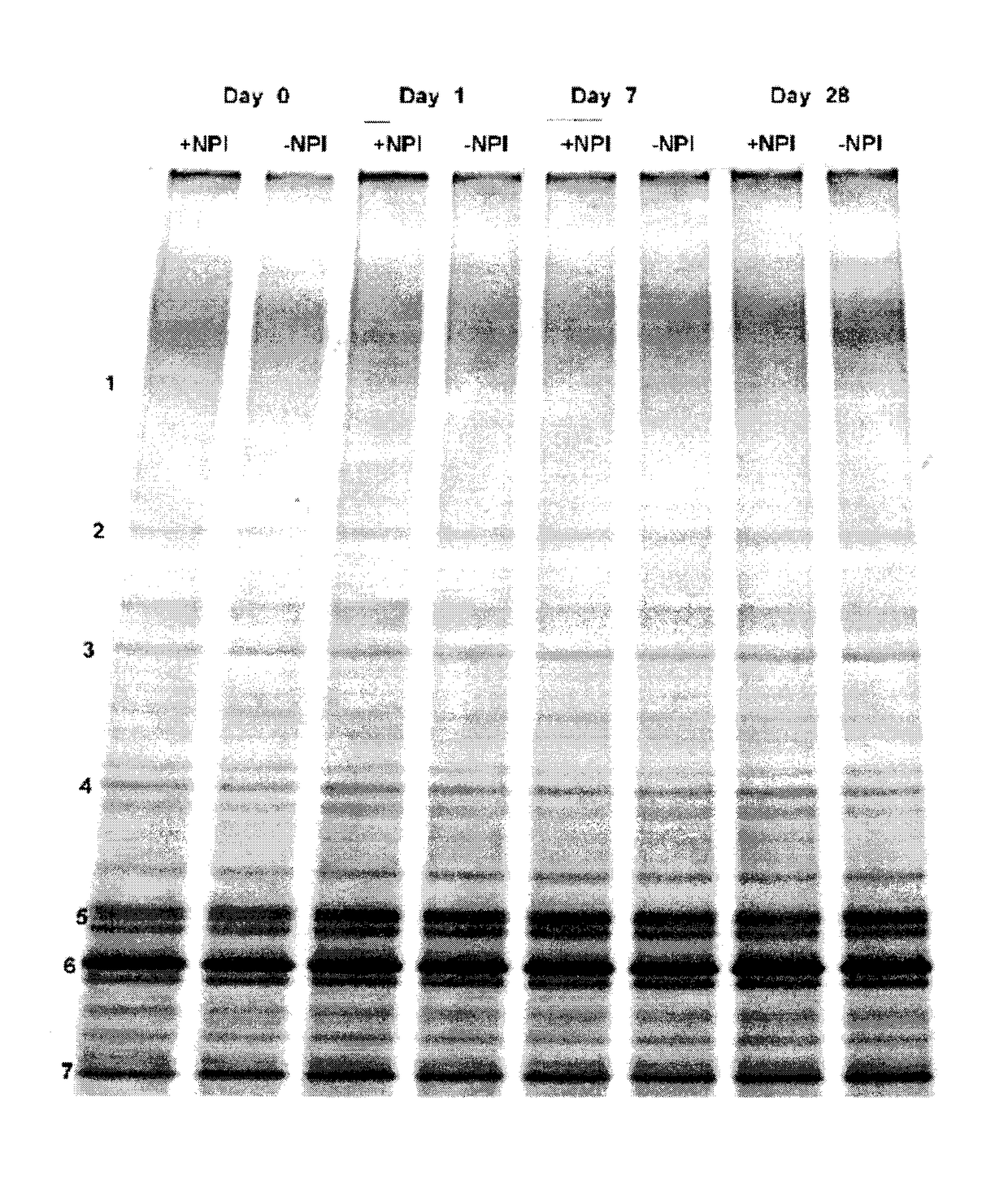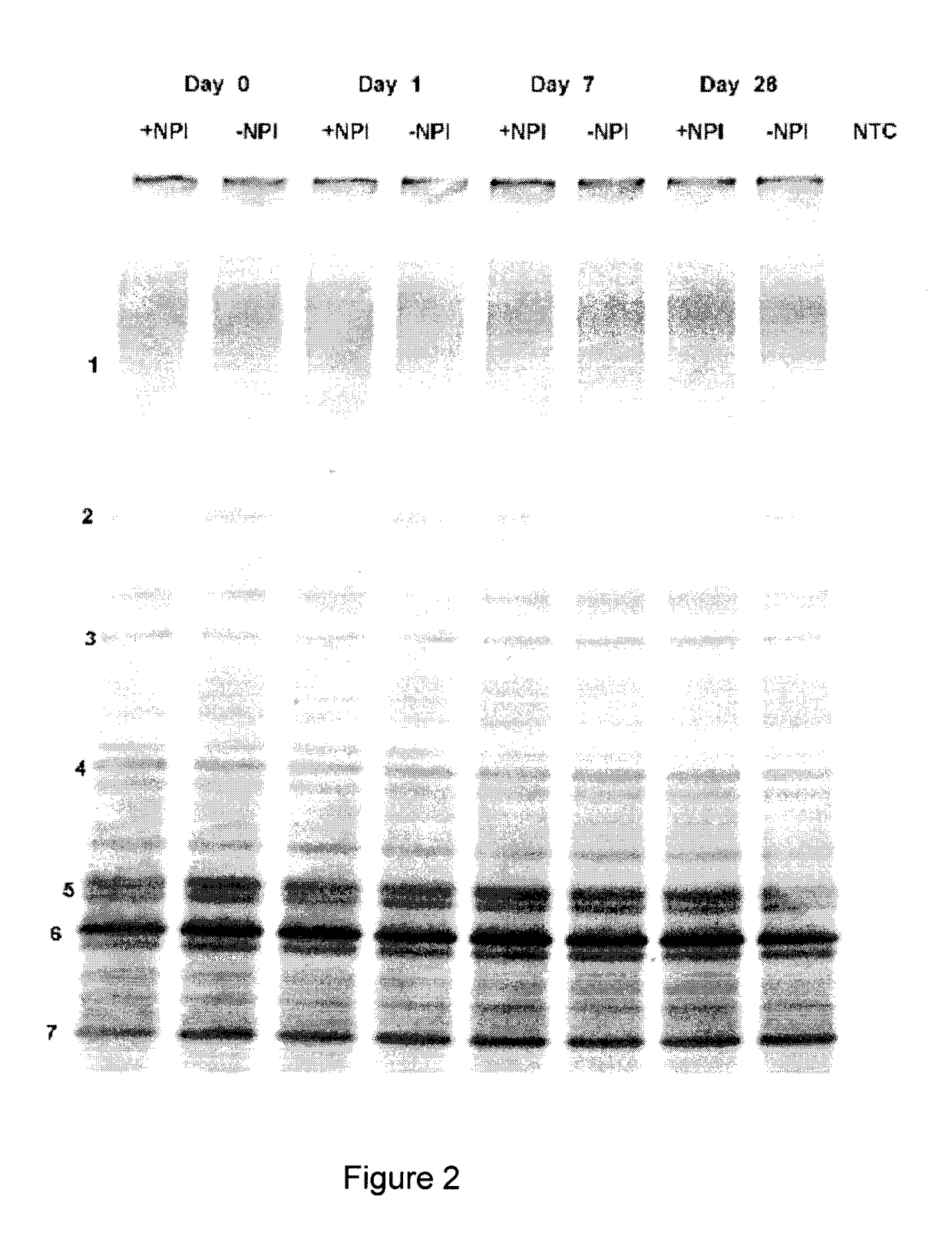Composition And Method For Stabilizing And Maintaining The Viability Of Hardy Microorganisms
a technology of hardy microorganisms and composition methods, which is applied in the field of composition and maintenance of can solve the problems of curtailing the spread, reducing and reducing the number of deaths of tb, so as to achieve the effect of stabilizing and maintaining the viability of hardy microorganisms
- Summary
- Abstract
- Description
- Claims
- Application Information
AI Technical Summary
Benefits of technology
Problems solved by technology
Method used
Image
Examples
example 1
Ambient Temperature Stability of Mycobacterium tuberculosis-Spiked Sputum Stored in Sample Transport Chemistry
[0069]One of the major goals for the global control of TB in humans is the laboratory diagnosis of M. tuberculosis, the causative agent of TB, followed by adequate treatment. Difficulties involved in the collection, transport, and processing of sputum specimens have been a major issue in current global TB control efforts. M. tuberculosis is present in sputum specimens which are often contaminated by other fast growing microflora. The rapid growth of certain less clinically relevant species at ambient temperature can kill or overgrow medically important pathogens. Therefore, delays in either transport of specimens to the laboratory or availability of trained personnel or infrastructure to perform the processing are problematic.
[0070]In high-burden countries, sputum acid-fast bacilli (AFB) microscopy services are not available in many healthcare facilities, which can force a s...
example 2
Sample Transport Chemistry Liquefies Sputum upon Contact
[0128]Sputum from humans is used to diagnose tuberculosis and detect infection in cystic fibrosis patients. Bacteria are not uniformly distributed in such a highly viscous specimen, which poses a problem for the acid fast staining typically used to identify Mycobacteria. Remarkably, this technique for diagnosing tuberculosis has been found to have only about 50% sensitivity, i.e., there is an equal chance of detecting the presence of TB as not detecting it when the patient actually has the disease. This lack of sensitivity is due to the inability of existing sample preparation protocols to generate a sample in which the bacteria is uniformly distributed such that there is an equal probability of obtaining Mycobacteria for staining from any portion of the specimen. Hence, liquefaction and homogenization of sputum specimens is critical to ensure accurate, representative sputum cultures and molecular diagnostics.
[0129]Liquefaction...
example 3
Compatibility of Sample Transport Chemistry in Tuberculosis Diagnostics using Smear Microscopy, Culture and Molecular Diagnostic Assays
[0142]Globally, about 2 billion people are infected with the potentially highly infectious M. tuberculosis (“MTB”). Every year almost 9 million people develop active disease, and 2 million people die of the illness. Given the infectious nature of MTB, fast and accurate diagnosis is an important element of MTB treatment and disease control.
[0143]Four common first-line drugs used in anti-tuberculosis therapy are Isoniazid (INH), Rifampin (RIF), Ethambutol (EMB), and Pyrazinimide (PZA). MTB strains, however, can become resistant to one or more of the drugs, making cure difficult to achieve. RIF resistance is most commonly seen in multi-drug resistant (MDR-TB) strains and has a reported frequency of greater than 95% in such isolates (Morris et al, 1995). MDR-TB is defined as a tuberculosis disease caused by a bacterial strain that is resistant to at leas...
PUM
 Login to View More
Login to View More Abstract
Description
Claims
Application Information
 Login to View More
Login to View More - R&D
- Intellectual Property
- Life Sciences
- Materials
- Tech Scout
- Unparalleled Data Quality
- Higher Quality Content
- 60% Fewer Hallucinations
Browse by: Latest US Patents, China's latest patents, Technical Efficacy Thesaurus, Application Domain, Technology Topic, Popular Technical Reports.
© 2025 PatSnap. All rights reserved.Legal|Privacy policy|Modern Slavery Act Transparency Statement|Sitemap|About US| Contact US: help@patsnap.com



